
I was thrilled to get a chance to review the Groovy Lab in a Box subscription box program. We here at GeekMom have had the privilege of reviewing many subscription box services that cover a very wide variety of topics, from kids’ crafts to adult crafts to healthy living.
This is a unique subscription box experience in that it’s providing some very specific STEM activities to older elementary school students, ages 8-12, or grades 3-5. I hadn’t seen or heard of anything like it.
In this post I will go over the Groovy Lab in a Box our family received for review, share my interview with co-founder Elaine Hansen, and conclude with a coupon code and a chance for you to win a three-month Groovy Lab in a Box subscription of your very own. Look for that giveaway and coupon on the bottom of the post!

Groovy Lab in a Box, February 2014: “Fly With Me!”
The theme for the box we received, titled “Fly With Me!,” was aeronautical engineering. The shoebox-sized box arrived at our door and was stuffed to the brim with just about all of the supplies needed to complete the 10 activities that introduce your “STEMist” to principles of aerodynamics and aeronautics. In addition to the materials for the experiments, there was a pair of safety glasses, a sticker (which you’ll see on my youngest son in a photo in this post), and a coupon to share with a friend.
Central to everything is the Lab Notebook. It provides the instructions for the activities, background information, discussion questions meant to take the activities to the next level, and space for drawings and brainstorms. Lots of space.
In addition to everything in the box, the “STEMists” will want access to the Beyond…in a Box website for additional resources. The kids will find music, informative videos, videos of other box subscribers sharing their creations, and supplemental information for those who want to learn more. A login and password is included in the Lab Notebook.

The first activity recommended, and the first one my son accomplished, was the parachute. All of the materials to do this activity were included except for the scissors to cut the string. There’s even a ruler enclosed for measuring the string.
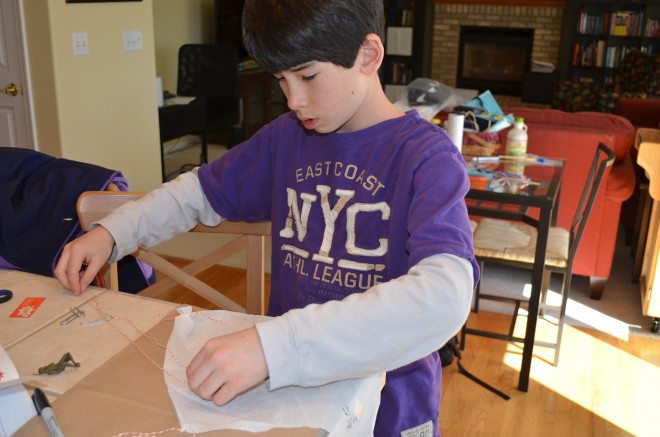
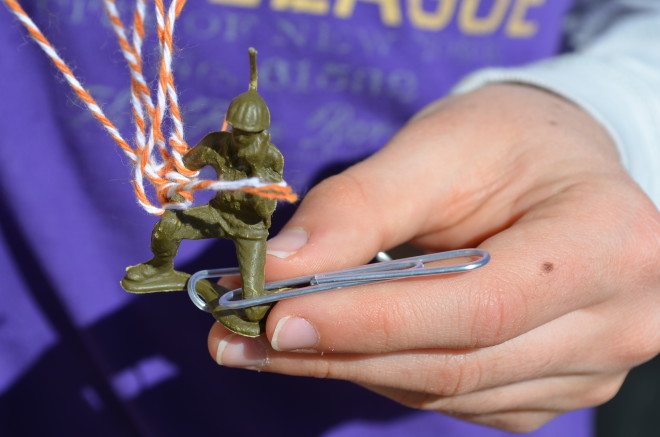
In the Lab Notebook, your student will be guided through making the parachute and launching it with an object tied to it. Then the student will be challenged with additional questions. What if you add weight to the action figure? What if you remove weight from the action figure? What forces are acting on your parachute?

The final question, one that my sons, my husband, and I discussed, was “Draw how you would change the parachute so that it will work well on a planet where the atmosphere is thinner than it is on Earth.” My sons didn’t draw the answer, but it was a great dinner table discussion.
After some additional experiments demonstrating the principles of flight, STEMists are given several working airplane experiments to put the fundamentals into practice.
My sons explored the “Deux” Loop Glider and Catapult Airplane.
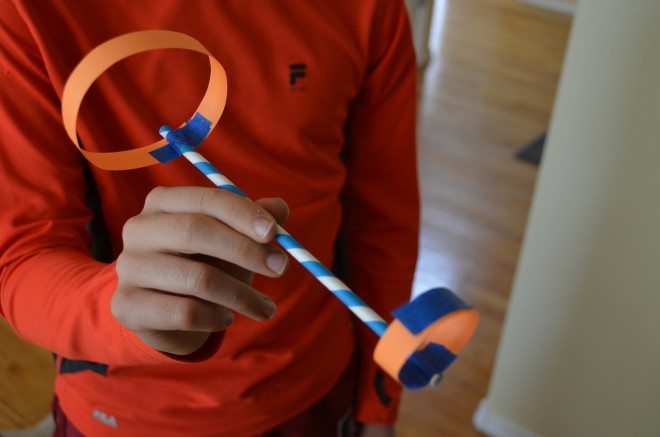


In summary, I am in love with the concept and potential of this program. I fully intend to continue a subscription for my sons. As you’ll read in the next section, some great topics are coming up for subscribers!
The company has a fantastic social media presence, including Twitter, Facebook, Pinterest, Google+, Instagram, and YouTube. The company maintains a blog on Tumblr. Check them out through these links to learn more.
The Groovy Lab in a Box subscription program is available through the company’s website. Prices range from $28.95 for a single box (plus shipping) down to $23.95 per box for a 12 month subscription, with >1 month subscriptions including free shipping. The longer a subscription you choose, the lower the price-per-box becomes. The target audience for the home subscription boxes are 3rd through 5th grade students, with programs for Kindergarten through 2nd grade students coming soon.
Interview with Co-Founder Elaine Hansen
I had the chance to talk to Academics in a Box co-founder Elaine Hansen last week. She and I could have talked for hours if she didn’t have a busy full-time schedule to maintain.
Ms. Hansen herself is a mother of an elementary-school aged son, and is a high school chemistry teacher. Over her years of teaching, Ms. Hansen realized that school curricula are becoming more constrained in some of the basics of the scientific process, such as giving time for students to brainstorm new ideas, asking follow-on questions, and being allowed to retry experiments with slight changes in variables. She feels that having the opportunity to do those tasks will truly embed scientific thought in students and motivate more students into STEM lifestyles. The Groovy Lab in a Box program provides relevant STEM education to elementary school students in a fun way that truly harnesses children’s intuitive curiosity.
The program works in concert with the Next Generation Science Standards that are making their way into state education programs. Click the above link to learn more about what those standards include and the status of their getting integrated in your own state. One of the NGSSs that is seen in each of the subscription boxes each month is the elevation of the engineering design process to the same level of importance as teaching scientific inquiry. In other words, there is a project goal with each month’s box that the student will design and execute using the concepts learned through the included experiments. In our “Fly With Me” box, this project was to build an airplane that could fly 15 feet. This is the future of teaching science in America!
Ms. Hansen and I also discussed the open-endedness of science, and hence the open-endedness of the subscription boxes. If you consider current modern science, researchers are allowed to make a hypothesis, test the hypothesis, and possibly fail at that hypothesis. It’s important for students to learn that failure is okay. Also, the subscription boxes give students the chance to ask follow on questions, which can then lead to further experiments and further discovery. This is how science works.
We discussed some of the unique features of Groovy Lab in a Box:
- Include what you need in the box. Ensure an enthusiastic child doesn’t need to stop everything to wait for Mom to take him/her to the craft store for a couple sheets of card stock. Even though materials are included in the box, if one wants to recreate the experiment, the materials aren’t difficult to find.
- Personal protective equipment. In the case of the box we received, there was a pair of science-lab-quality eye protection.
- Eco-friendly materials. With very few exceptions (such as the ping pong balls and fishing line in the box my family received) the materials are recyclable. The straws were made of paper, in fact.
- Retro-designs and colors. The visuals of the box, materials, and website all reflect fonts, artwork, and colors that harken back to the days of the Apollo project. Ms. Hansen wants to get users to reflect on the emphasis on scientific innovation, research, and investment in the 1960s.
- Many of the materials are multitaskers. The ruler can double as a bookmark, and there was a keychain that looks like one of those grocery store discount cards that you put on a keyring. That keychain doubles as a hole punch: there are instructions in the Lab Notebook.
Some great initiatives are in the works for the company as well. They recently announced collaborations with Destination Imagination and camp STEM in Murfreesboro, Tennessee. Groovy Lab in a Box is providing materials to these groups to help facilitate their missions. In addition, educator boxes are now available to teachers; these are lower-cost boxes that are sent out in bulk for the classrooms. There is also a STEM Team variation to these boxes; the Beyond…in the Box website gives details on how to divide tasks for team projects.
Our January "Pull Your Weight" box is all about pulleys, cranes & Newton's 3rd Law! http://t.co/dwhfYUl7w6 #STEM pic.twitter.com/YAgn4ZGVKc
— Groovy Lab in a Box (@GroovyLabInABox) January 14, 2015
Finally, I had the chance to learn about some of the upcoming boxes. For the month of March, a “Swing into Spring” box is coming to subscribers, teaching the parts of a plant, the life cycle of a plant, and the water cycle. The engineering design challenge will be a greenhouse! Catapults, solar power, and geology boxes are forthcoming as well.
Ms. Hansen’s enthusiasm and passion for her business are contagious. We lamented for the days when scientists were the pop-culture celebrities, rather than some of the role models our kids are being exposed to today. I immensely enjoyed talking to her about everything she and her partner Monica Canvan have done in the past year and it even made it wonder, “Am I doing enough?” when it comes to promoting STEM concepts with my sons.
Coupon for New Subscribers
The ladies at Groovy Lab in a Box have offered GeekMom readers a coupon for 50% off the first month’s box with the purchase of a subscription. Simply enter coupon code GEEKMOM50 at checkout!
A Giveaway!
Would you like to win your very own three-month gift subscription, starting with the “Swing into Spring” box? Simply enter our giveaway, following the instructions on our Rafflecopter widget.
GeekMom received this item for review purposes.
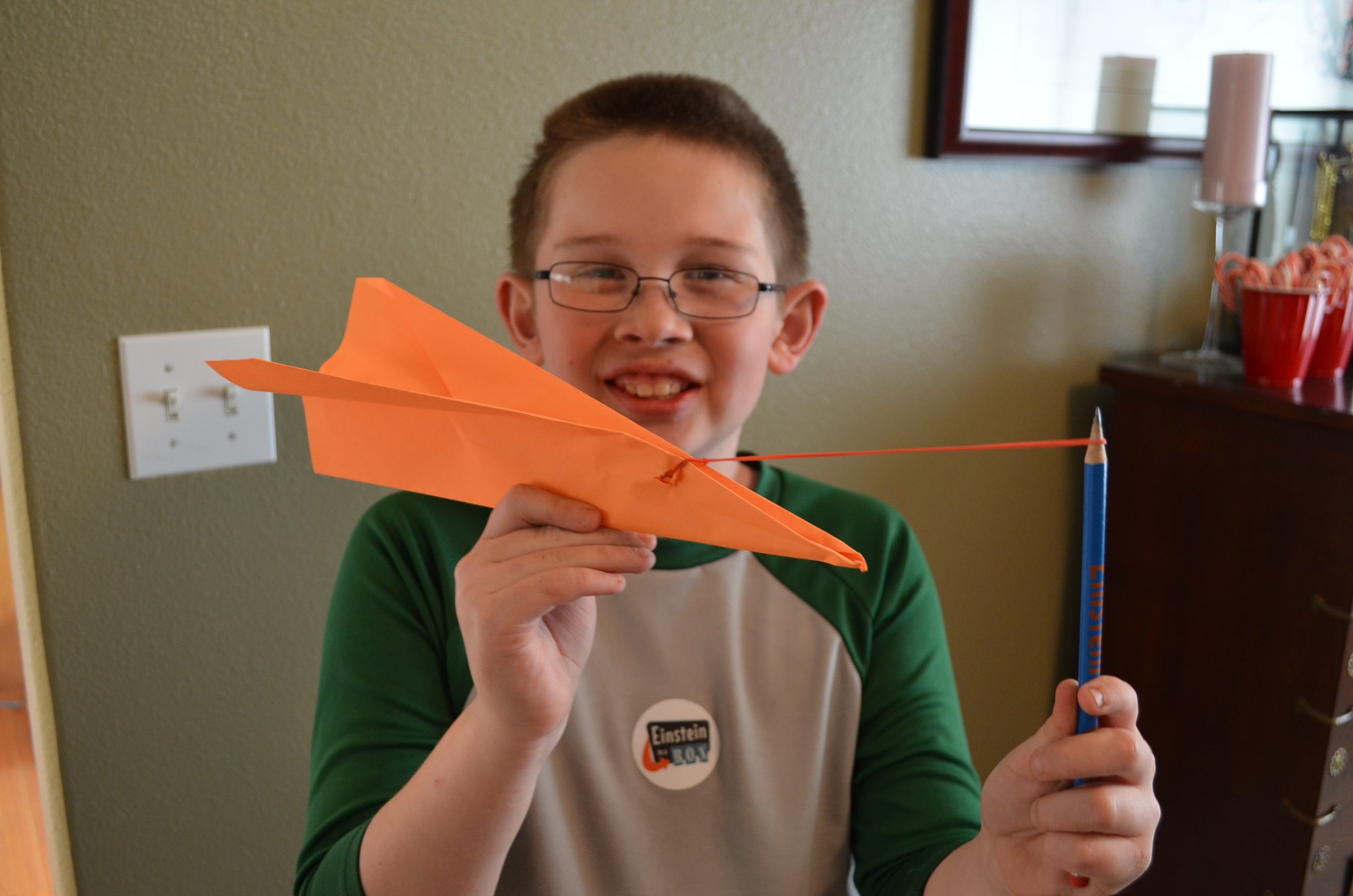



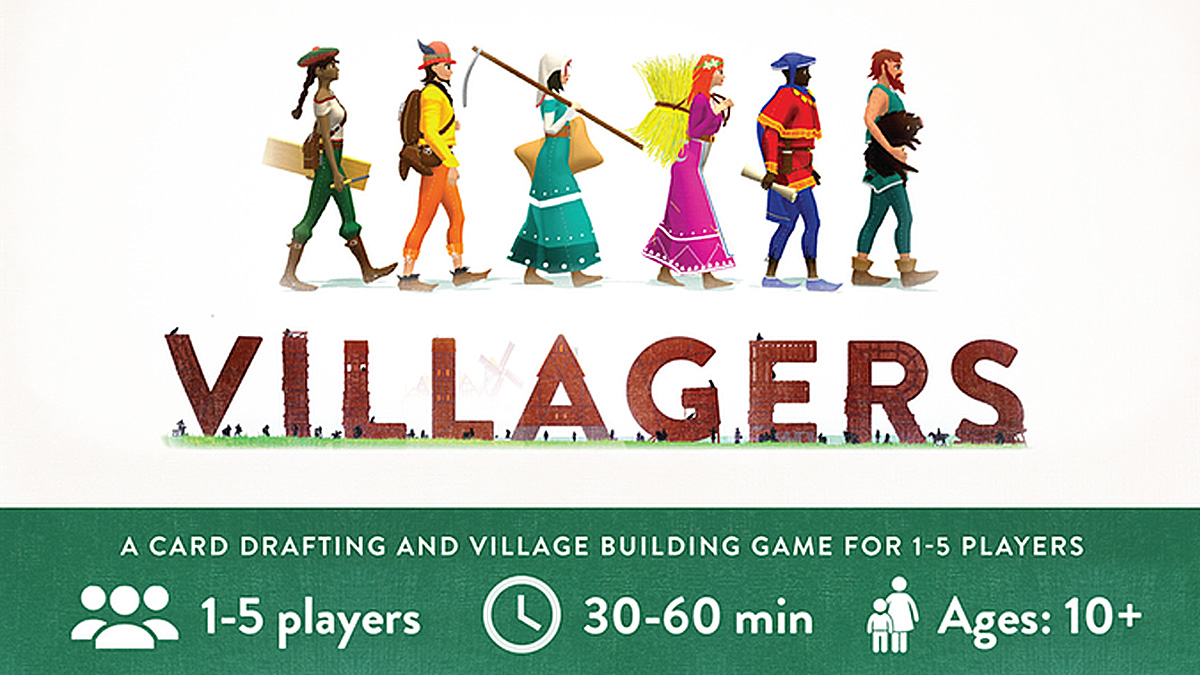
I WANT!
Consider storing safety information with the generator so that it is easy to find when you need it in a hurry.
Before attempting to start the generator, take a few minutes to read over the information provided by the manufacturer so that you understand how to safely operate the machine.